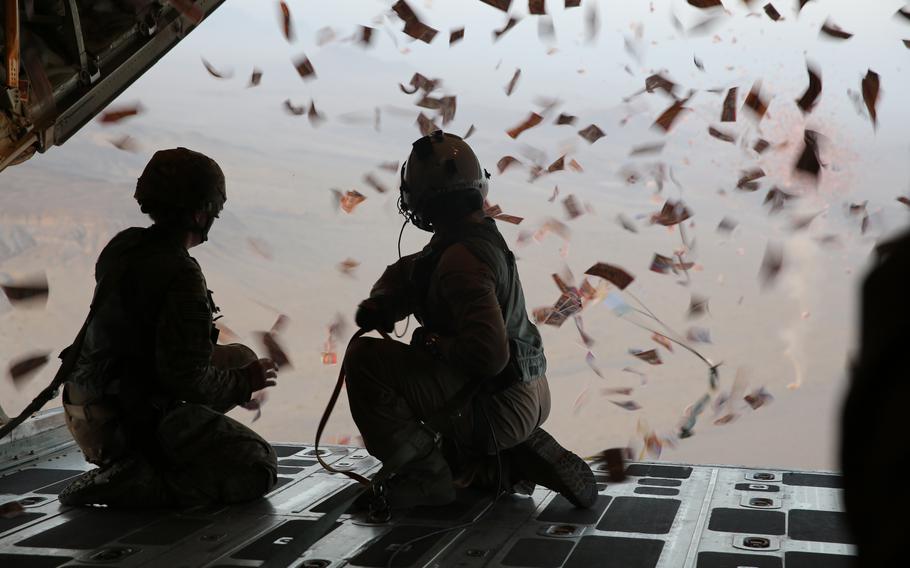
Army Sgt. Lisa Swan, left, and Marine Corps Sgt. Joseph Szombathelyi drop leaflets from a KC-130 Super Hercules over southern Afghanistan in this undated photo. (Demetrius Munnerlyn/U.S. Marine Corps)
U.S. troops need more artificial intelligence support to challenge Russia and China on the information battlefield, where those two adversaries have American forces outgunned, according to a new Pentagon-commissioned report.
Machine learning tools can give a boost to military teams carrying out influence operations, in which American foes are now engaged “at a scale that (the Defense Department) cannot match,” the Rand Corp. report released Tuesday said.
The United States risks falling farther behind if it doesn’t adopt AI technology in large volumes, the study said.
“Adversaries are rapidly adopting and applying generative AI capabilities for many functions, including influence,” Rand said.
The Pentagon should prioritize AI investments for information operations and seek out related AI training opportunities for troops involved in the mission, the report contends.
Across the military, commands are experimenting with AI in search of an edge in making faster decisions. The technology is expected to transform everything from how high-level headquarters command forces to how infantrymen on the front lines make decisions on the fly.
For years, the U.S. military has been involved in influence operations around the world. Such missions can take many forms, ranging from dropping leaflets to alert a local population in a war zone, to identifying false narratives pushed by adversaries or seeking to undermine popular support for an enemy force.
Given how fast information moves, the Pentagon needs to be able to detect adversaries’ action “in the media ecosystem” and move quickly to discredit them before their preferred narratives take hold, Rand said.
“DoD experts framed this challenge with the example of the prevalence of false civilian death tolls reported by Hamas that persist despite authoritative sources having refuted them,” the report authors said.
Generative AI can “balance the battlefield” by allowing fewer U.S. personnel to produce more content faster, the report states.
Army special operations teams are experimenting with such tools. For example, a system known as Ghost Machine has already been developed. Among other capabilities, it can clone voices to convey desired messages, Rand said.
“A team may want to mimic an enemy commander as part of an effort to get them to surrender,” the report gave as an example.
AI tools that enable quick production of graphics, videos and other material with individually tailored messages could help troops hit their target audiences with greater precision, Rand said.
In one scenario, researchers tested how a planning team could refine messages to resonate with individual terrorists as part of a deradicalization effort.
In a battlefield scenario, AI also would enable military psyop teams embedded with conventional forces to disseminate messages faster, Rand said.
Still, the U.S. should be cautious about overdoing it. Adopting the preferred tactic of the Russians and Chinese of “flooding the zone” with their propaganda carries risks, the report noted.
“They are going high volume low effort; we are throwing a specific dart,” one influence operator told Rand.
The adversaries’ approach is arguably less effective because the volume of content can dampen the credibility of the message. American operators will need to find the sweet spot to win on the information battlefield, the report said.